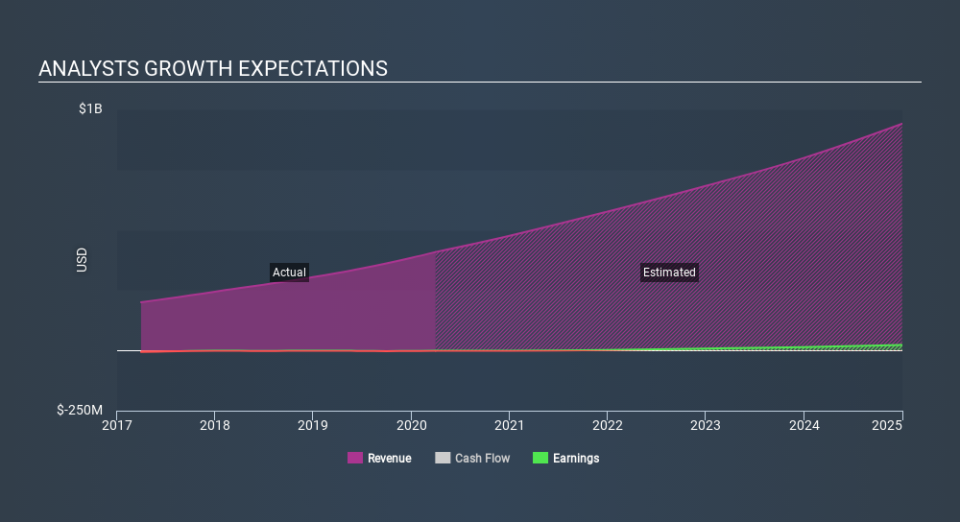Trupanion, Inc. (NASDAQ:TRUP) First-Quarter Results: Here's What Analysts Are Forecasting For This Year

Shareholders might have noticed that Trupanion, Inc. (NASDAQ:TRUP) filed its first-quarter result this time last week. The early response was not positive, with shares down 7.2% to US$28.18 in the past week. Revenues of US$111m arrived in line with expectations, although statutory losses per share were US$0.03, an impressive 25% smaller than what broker models predicted. The analysts typically update their forecasts at each earnings report, and we can judge from their estimates whether their view of the company has changed or if there are any new concerns to be aware of. So we gathered the latest post-earnings forecasts to see what estimates suggest is in store for next year.
View our latest analysis for Trupanion
Taking into account the latest results, the current consensus from Trupanion's six analysts is for revenues of US$475.3m in 2020, which would reflect a decent 16% increase on its sales over the past 12 months. The loss per share is expected to greatly reduce in the near future, narrowing 26% to US$0.035. Before this latest report, the consensus had been expecting revenues of US$473.8m and US$0.042 per share in losses. While the revenue estimates were largely unchanged, sentiment seems to have improved, with the analysts upgrading revenues and making a losses per share in particular.
The average price target held steady at US$39.33, seeming to indicate that business is performing in line with expectations. There's another way to think about price targets though, and that's to look at the range of price targets put forward by analysts, because a wide range of estimates could suggest a diverse view on possible outcomes for the business. There are some variant perceptions on Trupanion, with the most bullish analyst valuing it at US$50.00 and the most bearish at US$33.00 per share. There are definitely some different views on the stock, but the range of estimates is not wide enough as to imply that the situation is unforecastable, in our view.
Looking at the bigger picture now, one of the ways we can make sense of these forecasts is to see how they measure up against both past performance and industry growth estimates. It's pretty clear that there is an expectation that Trupanion's revenue growth will slow down substantially, with revenues next year expected to grow 16%, compared to a historical growth rate of 23% over the past five years. By way of comparison, the other companies in this industry with analyst coverage are forecast to grow their revenue at 2.3% next year. Even after the forecast slowdown in growth, it seems obvious that Trupanion is also expected to grow faster than the wider industry.
The Bottom Line
The most important thing to take away is that the analysts reconfirmed their loss per share estimates for next year. Happily, there were no major changes to revenue forecasts, with the business still expected to grow faster than the wider industry. The consensus price target held steady at US$39.33, with the latest estimates not enough to have an impact on their price targets.
With that in mind, we wouldn't be too quick to come to a conclusion on Trupanion. Long-term earnings power is much more important than next year's profits. At Simply Wall St, we have a full range of analyst estimates for Trupanion going out to 2024, and you can see them free on our platform here..
Plus, you should also learn about the 2 warning signs we've spotted with Trupanion .
If you spot an error that warrants correction, please contact the editor at editorial-team@simplywallst.com. This article by Simply Wall St is general in nature. It does not constitute a recommendation to buy or sell any stock, and does not take account of your objectives, or your financial situation. Simply Wall St has no position in the stocks mentioned.
We aim to bring you long-term focused research analysis driven by fundamental data. Note that our analysis may not factor in the latest price-sensitive company announcements or qualitative material. Thank you for reading.

